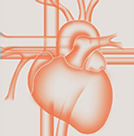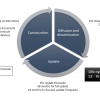Summary
The nature of Medicine and the pace of change with the accumulation of new clinical study data, drugs and interventional technologies make the navigation of the contemporary evidence-base challenging for clinicians. Guidelines exist to assist in this navigation.
International experts in their respective fields are convened periodically to cover selected areas of clinical practice and provide an overview as well as specific recommendations on diagnosis and treatment weighted by the strength of available evidence.
Guideline practice development is at its most advanced in Europe and North America. This annexe presents an abridged version of guidance relevant to the field of percutaneous interventional therapies. In addition, consensus statements on important narrower topics relevant to interventional practice from the EAPCI and ESC have been included.
Practitioners should be aware that this body of work is constantly evolving and therefore must check the online resources, such as www.escardio.org , to ensure that they are consulting the latest iteration. The life-cycle of the ESC guidelines is summarised in Figure 1.
Furthermore, it must be emphasised that guidelines (and consensus statements) exist to ‘guide’ and do not represent a substitute for decision-making by individual medical practitioners and teams with their individual patients based on local experience and resources. The application of evidence-based medicine is a fusion of clinical judgement, patient engagement and the available experimental and observational data that are synthesised by clinical practice guidelines. The information presented here via links to online resources must be read in that light.




